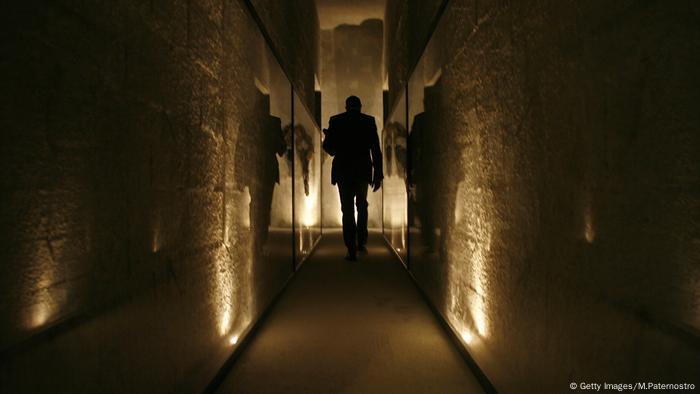The recent news about the terrorist attack in Paris has many people on edge. What is even more frightening is that the terrorists were able to plan and execute their attack without being detected by law enforcement. This has led many people to ask what is a terrorist method of surveillance?
There are several methods of surveillance that terrorists use to avoid detection. One common method is using encrypted communication channels such as email or instant messaging. Another method is using online forums and social media platforms to communicate and share information without being detected.
Another way that terrorists avoid detection is by conducting reconnaissance missions prior to an attack. They will often times take pictures or videos of potential targets, map out escape routes, and identify security weaknesses. By doing this, they can plan their attacks in a way that gives them the best chance of success while avoiding detection.
There’s a lot of talk these days about terrorist methods of surveillance. But what, exactly, is a terrorist method of surveillance? And how can we tell the difference between a legitimate law enforcement or intelligence-gathering operation and an illegitimate one?
First of all, it’s important to understand that there is no single definition of terrorism. Depending on who you ask, it can mean anything from using violence and fear to achieve political goals, to simply causing terror or fear for its own sake. For our purposes here, we’ll use the definition provided by the U.S. Department of Homeland Security: ” Terrorism is defined as any activity that involves an act that is dangerous to human life or potentially destructive of critical infrastructure or key resources; and is intended to intimidate or coerce a civilian population; influence the policy of a government by intimidation or coercion; affect the conduct of a government by mass destruction, assassination, kidnapping; or robbery.”
With that in mind, let’s take a look at some common methods of surveillance used by terrorists. One popular method is known as “data mining.” This involves collecting large amounts of data from various sources and then using computers to sift through it all looking for patterns or trends that could be useful for planning attacks.
Another common method is called “human intelligence” gathering, which involves recruiting people with inside knowledge about potential targets and then extracting information from them through interrogation or other means.
Of course, not all forms of surveillance are necessarily bad. Law enforcement and intelligence agencies use many of the same techniques as terrorists do in order to gather information about potential threats.
The key difference lies in how the information is used. If it’s used solely for the purpose of preventing crimes or catching criminals after they’ve committed their acts, then it’s considered legitimate. But if the information gathered through surveillance is used primarily for carrying out attacks or furthering terrorist goals, then it crosses the line into illegitimacy.

Credit: www.dw.com
-What are the Different Types of Surveillance
-How is surveillance used?
-What are the benefits and drawbacks of surveillance?
Surveillance is the monitoring of the behavior, activities, or other changing information, usually of people for the purpose of influencing, managing or protecting them.
It can occur in private places (homes, offices) or in public places (parks, streets). It can be done by physical means (e.g., watching someone) or electronically (e.g., using CCTV cameras).
There are many different types of surveillance, from simple observation to more sophisticated methods that use technology to track people’s movements and activities.
Some common types of surveillance include:
Closed-circuit television (CCTV): This is a system of video cameras that are used to monitor a specific area. The footage from CCTV cameras is typically monitored in a central location.
CCTV is often used in public places like shopping malls and train stations as a way to deter crime and improve security. License plate recognition (LPR): This is a type of technology that can be used to automatically read and record the license plate numbers of vehicles. LPR systems are often used by law enforcement agencies to keep track of suspected criminals or vehicles that have been involved in crimes.
GPS tracking: This involves using Global Positioning System (GPS) technology to track the movement of people or objects. GPS tracking devices can be placed on cars, phones, or even people themselves in order to monitor their whereabouts. Cell phone tracking: Cell phone tracking uses tower triangulation techniques to determine the location of a cell phone user.
Hero Wrestles Seattle Gunman During Reload [CAUGHT ON CAMERA]
Conclusion
Government surveillance of citizens has been a hotly debated topic for years. Some argue that it’s a necessary evil to keep us safe from terrorist attacks, while others believe that it’s a violation of our privacy rights.
The recent revelations about the National Security Agency’s spying program have only added fuel to the fire.
But what exactly is the NSA doing? And what other methods of surveillance are there?
First, let’s start with what is not a terrorist method of surveillance.
The NSA is not monitoring every phone call and email. They are not reading our private messages or tracking our movements.
Instead, they are collecting metadata – information about who we are communicating with, when, and for how long – in an effort to identify potential terrorist threats.
This data is then used to track down terrorists and thwart their plots before they can do any harm.
Other methods of surveillance include things like CCTV cameras and license plate scanners. These are often used in public places like airports and shopping malls to deter crime and help solve crimes that have already been committed.
So, while government surveillance may be intrusive, it is not necessarily a bad thing. It can be used to keep us safe from those who wish to do us harm.